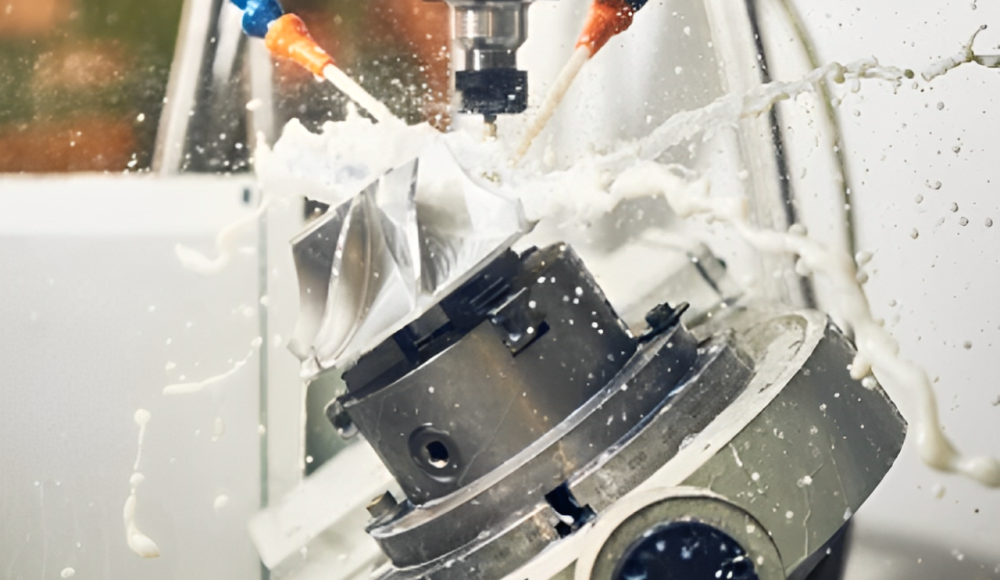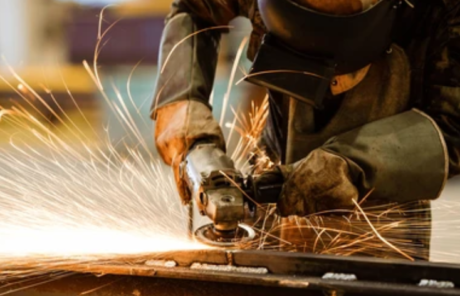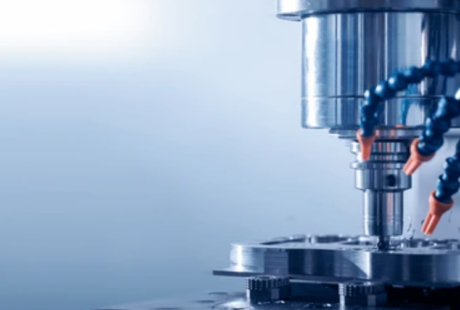Machining is a central operation in manufacturing, as it involves fixing or removing material from a workpiece, i.e. metals to achieve the required geometry. CNC is one of the most used machining techniques while the other one is referred to as manual machining. Summarily, while each has its advantages based on the task complexity, precision needed, or volume of production, each has its unique value proposition. In this article, you will learn what CNC and manual machining mean, how they operate, and their advantages and disadvantages.
What is CNC Machining?
CNC is Computer Numerical Control which is a method in which a machine tool is operated with the help of a computer program to produce some parts with very high accuracy. The machine deploys computer program codes. Then they determine the movement of the tools, speed, and feed rates of the machine. CNC machining has a wide scope of applications in making complex and repetitive accuracy work. These industries may include automotive, aerospace, electronics manufacturing, etc.
What is Manual Machining?
Manual machining involves an operator feeding and leading the cutting tools on the machining tools, i.e. lathes, mills, and grinders to form the material. Unlike CNC, manual machining mainly depends on the worker’s skills and expertise regarding the tools. It is predominantly applied during single-operation jobs, repair works, or to produce items that do not have close tolerance requirements.
How Does CNC Machining Work?
The CNC machining process starts with defining a computer-aided design or a CAD model of the part to be machined. This model is then translated into CNC programming language, i.e. G-code that directs the working of the machine. After the program is downloaded into the CNC machine by the computer, an operator configures the CNC machine, and then the computer takes over. The operation of cutting or milling takes place through the instructions left in the machine and few corrections are required on the parts.
How Does Manual Machining Work?
In manual machining, mechanists operate and control the tools manually under his/her direct control. The motion of the tools is synchronized with the machine setting, i.e. speed, depth of cut, and feed rate among others. The machinist manipulates the work with his hands by controlling the positions of the cutting tools. He helps form the material appropriately. Manual machining, on the other hand, has frequent interactions with the materials and physical operations, therefore it entails more manual operations and depends greatly on the skill of the worker.
The Comparison Between CNC Machining vs Manual Machining
The following are the main differences between CNC and manual machining:
-
Automation
CNC machining fully automates the machining process while in manual machining the process has to be run all the time.
-
Precision
CNC Machining is more accurate than manual machining. However, in CNC machining, the operations are directed by a controlled program.
-
Complexity
Complex designs can be conveniently designed for the CNC machining process while manual machining is most suitable for simple ones.
-
Speed
A CNC machine can fabricate a part much faster when compared to a manual machine particularly when it’s a large quantity.
-
Labor
Manual machining needs a lot of concentration from an operator while CNC machines only need a small initial input and then they are set to go on their own.
-
Cost
CNC machines are initially expensive to purchase while manually operated machining tools may prove to be expensive in terms of manpower during mass production.
The following table will summarize the major comparison between CNC machining and manual machining:
| Factors | CNC Machining | Manual Machining |
| Automation | Fully automated. | Manual operation by a machinist. |
| Precision & Tolerance | High: ±0.001″ (±0.025 mm). | Moderate: ±0.005″ (±0.127 mm). |
| Speed | Fast, ideal for high volumes. | Slower, dependent on operator skill. |
| Complexity | Ideal for complex geometries. | Best for simple designs. |
| Production Volume | Efficient for large runs. | Suited for low-volume or one-off jobs. |
| Labor Requirement | Minimal after setup. | High, requires skilled labor throughout. |
| Cost per Part | Lower for large runs. | Higher due to labor costs. |
| Setup Time | High: hours to days. | Low: minutes to hours. |
| Material Waste | Low, minimal waste. | Higher due to human error. |
| Machine Cost | High: $50,000 to $500,000+. | Lower: $5,000 to $50,000. |
| Skill Level | Requires CNC programming knowledge. | Hands-on machining expertise. |
| Repetition Accuracy | Consistent across parts. | Variability due to manual adjustments. |
| Ideal Use | High precision, complex, large runs. | Simple, custom, one-off jobs. |
When to Choose CNC Machining
CNC machining is one of the best methods of making complex parts and shapes and can be preferred in the following situations:
- When making parts that are supposed to have high levels of accuracy and uniform quality.
- Upon testing and thorough reviews of the original design and proving that it has met all the required production standards and is ready for mass production.
- Specifically, when designing shapes with many angles in the digital environment it would be possible to create in software by hand.
- High-precision industries extend to aerospace, automotive, and electronics sectors where accuracy and consistency are paramount.
- When automation and subsequently less labor are desired to save time.
When to Choose Manual Machining
Here are some points where we can go with manual machining:
- In case of smaller orders of 1 or 2 pieces or occasional repair works where it will be expensive to set up the CNC machine.
- While designing and coding simple parts or products with simple layouts of geometry that would not demand sophisticated programming.
- For cases where an element of human interaction or touch is required for adjustments in the product.
- When the budget is constrained, and the costs cannot be afforded to purchase the CNC machines outright.
- It is appropriate for small shops that allow manual control to give a fast reaction.
Which is Better: CNC Machining or Manual Machining for Your Project?
In short, there is no definitive answer as to what method is better. It all depends on the particular situation at hand. CNC has the advantage of accuracy, mass production, and intricate shapes than the traditional method. The latter is more applicable to the contexts where simple operations, repair, and one-time production are required, with less necessity in terms of precise accuracy as in the case of CNC.
Advantages and Disadvantages of CNC Machining
The following are the major merits and demerits of CNC machining:
Pros:
High precision and accuracy.
Ideal for complex designs.
The same results or at least, similar results across the various parts of the study.
Use where it is necessary to manufacture large quantities of the same product in a short time.
Consumes lesser manpower once established.
Cons:
High initial investment cost.
This is usually time-consuming, particularly during the initial stages of programming and setting.
Firms therefore are not suitable for one-off or simple jobs.
This one needs expert programmers to set it up.
Limited flexibility once programmed.
Advantages and Disadvantages of Manual Machining
Here are some advantages and limitations of manual machining:
Pros:
- Lower upfront cost.
- Meant more for one-time uses or projects that would be completed specifically for one party.
- Flexibility for on-the-fly adjustments.
- Simpler setup process.
- It can be driven with fairly basic levels of abilities but, as one gains more experience, more positive outcomes will be produced.
Cons:
- Less accuracy in comparison with CNC machining.
- Less efficiency especially when it is being used for big production runs.
- Labor-intensive, requiring skilled operators.
- Lack of uniformity exhibited through various parts of the section.
- As a fabrication technique, it is not suitable for geometries that are difficult to develop.
Applications of CNC Machining
So, let’s discuss some of the important applications of CNC machining:
- Aerospace component manufacturing.
- Automotive parts production.
- Printing industry Electronic industry for example production of printed circuit boards.
- Medical devices and prosthetics.
- Manufacturing of industrial tools through computer-accurate cuts.
Applications of Manual Machining
Here are some of the important applications of manual machining:
- Custom one-off parts.
- Repair and maintenance jobs.
- It can also be additional activities, or activities performed for own pleasure by one or several employees like small home-based freelance workshops, or hobby projects.
- Elements with little complexity, and therefore, little sophistication in the shape of their outlines or surfaces.
- Creation and development of the prototypes before having to launch mass production.
Conclusion
In conclusion, in the comparison between CNC machining and Manual machining, both machining processes have their uses in today’s manufacturing world. What sets CNC machining apart is its capability in precision, fast automation, and suitability for large production with intricate designs. However, there are still several industries and small jobs in which manual machining is beneficial for new parts, fixing broken items, and other similar tasks. The two options in selection depend on the need of the project in terms of complexity, volume, budget, and the level of precision required. When it comes to the balancing of these factors, you will be in a position to select the most appropriate machining method.
Frequently Asked Questions
Q1. When should I choose manual machining?
Manual machining is best suited for one-off work, small relatively uncomplicated shapes, making repairs, and where frequent changes in dimensions are likely to be required.
Q3. Can I use both CNC and manual machining in a single project?
Yes, it is usual to apply both methods just in case the part to be produced involves a complicated design or is based on the production phases.
Q4. Is CNC machining more expensive than manual machining?
One disadvantage of CNC machines is they are initially expensive. But for massive production, they are cheaper than conventional machines as they reduce labor expenses and speed up operations.
Q5. Can manual machining achieve the same precision as CNC?
While done by hand, manual machining is also accurate as compared to CNC machining but it lacks precision and repeatability.








4 thoughts on “A Complete Overview of CNC Machining Vs Manual Machining”